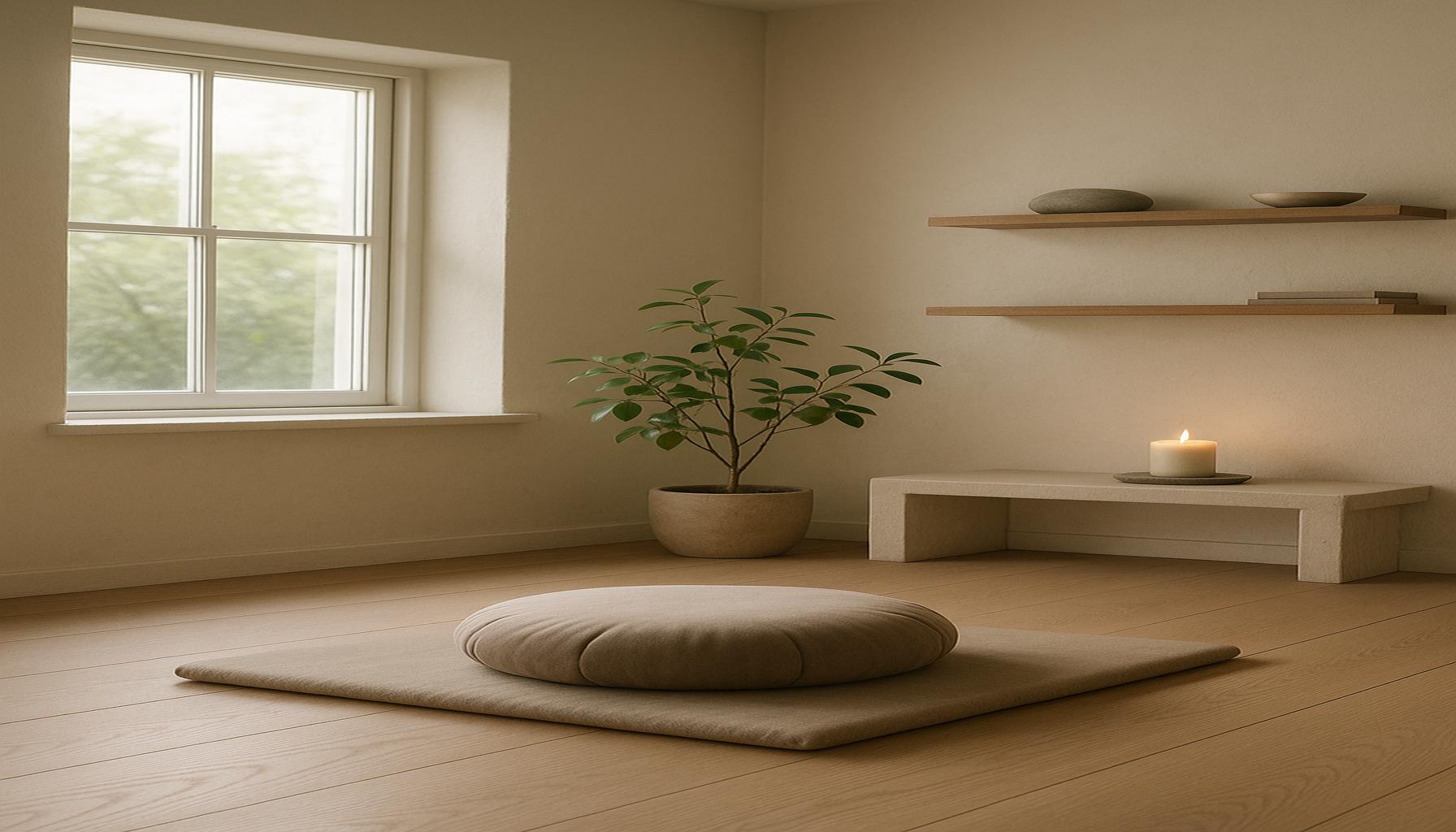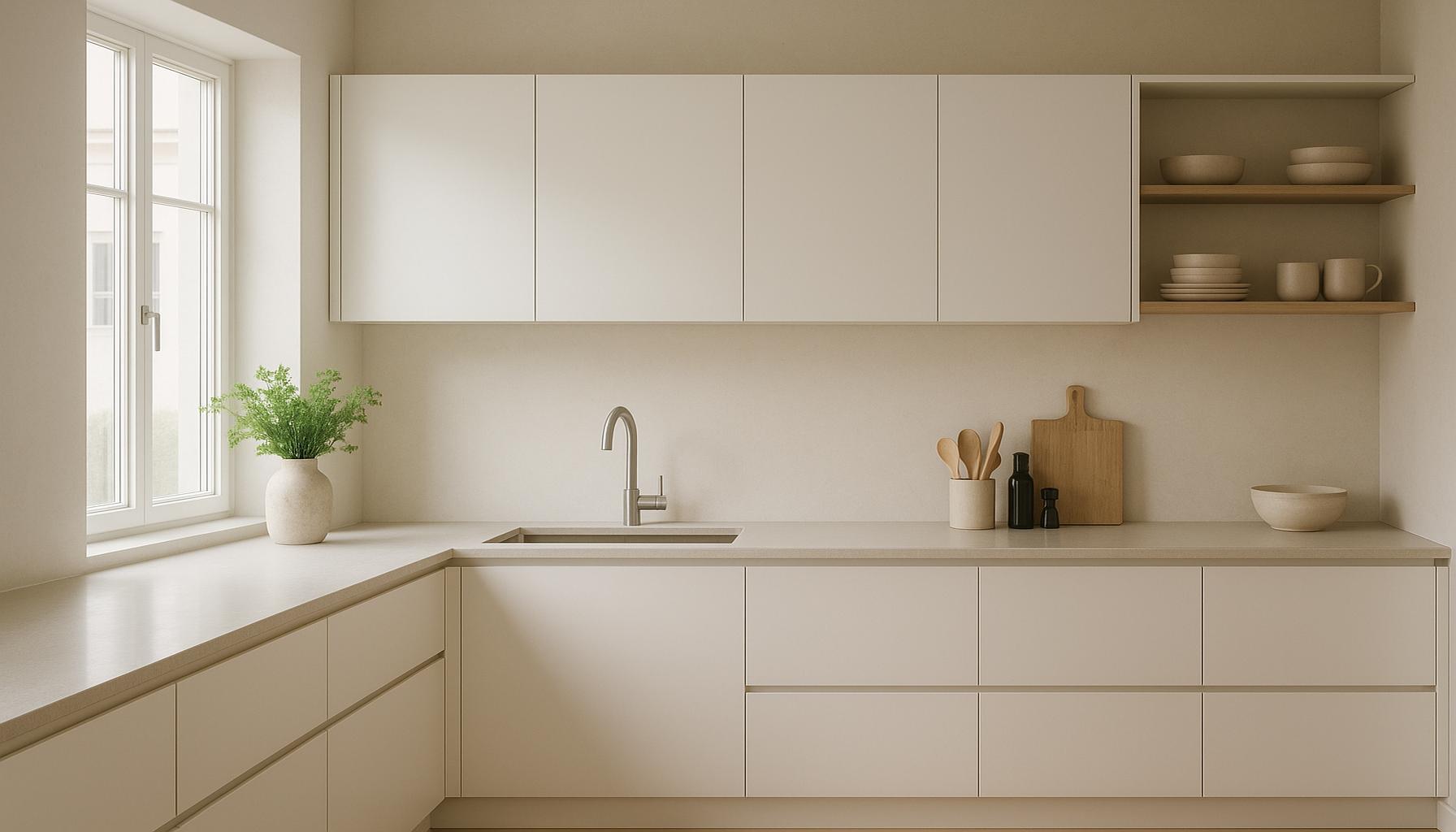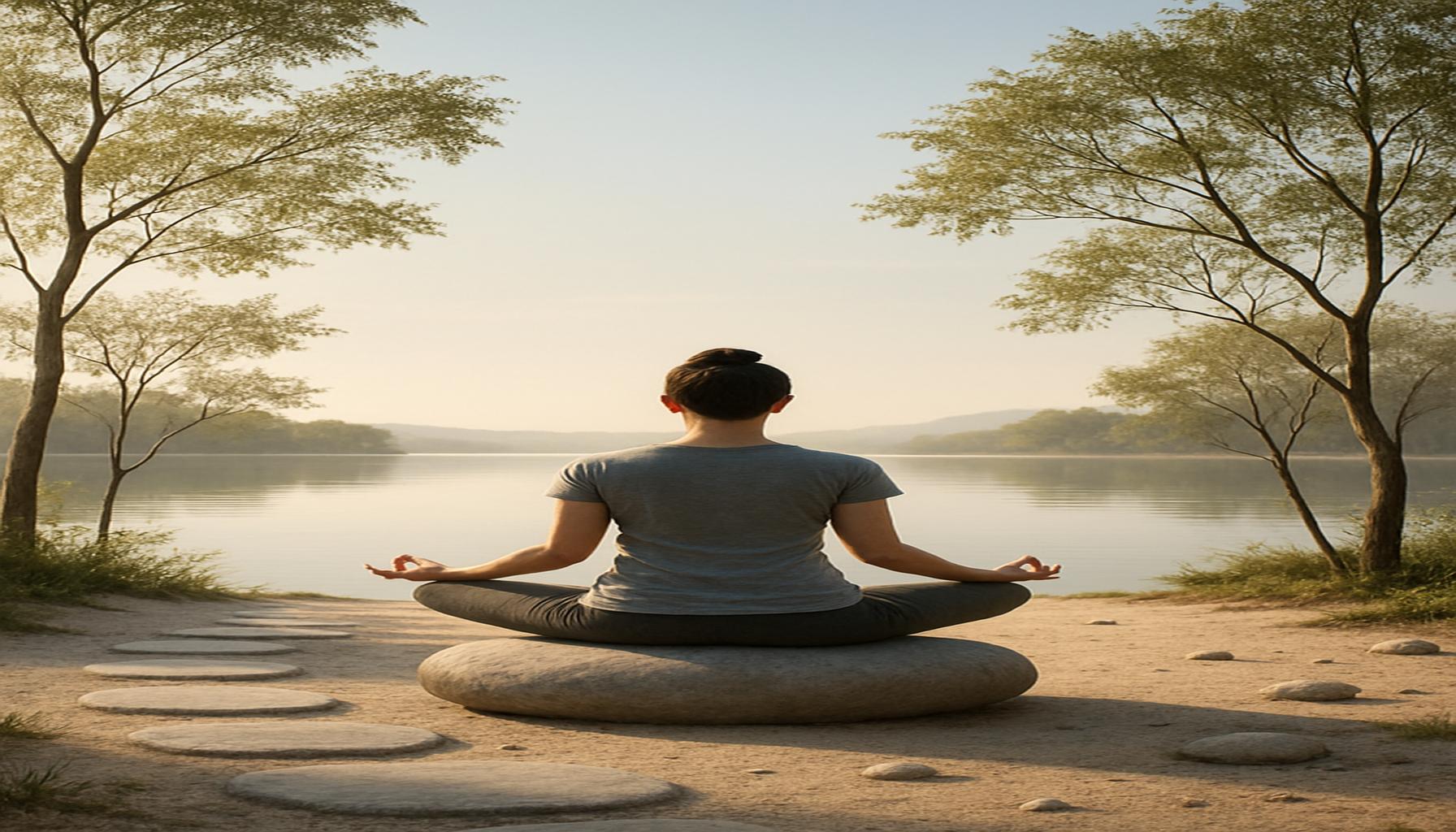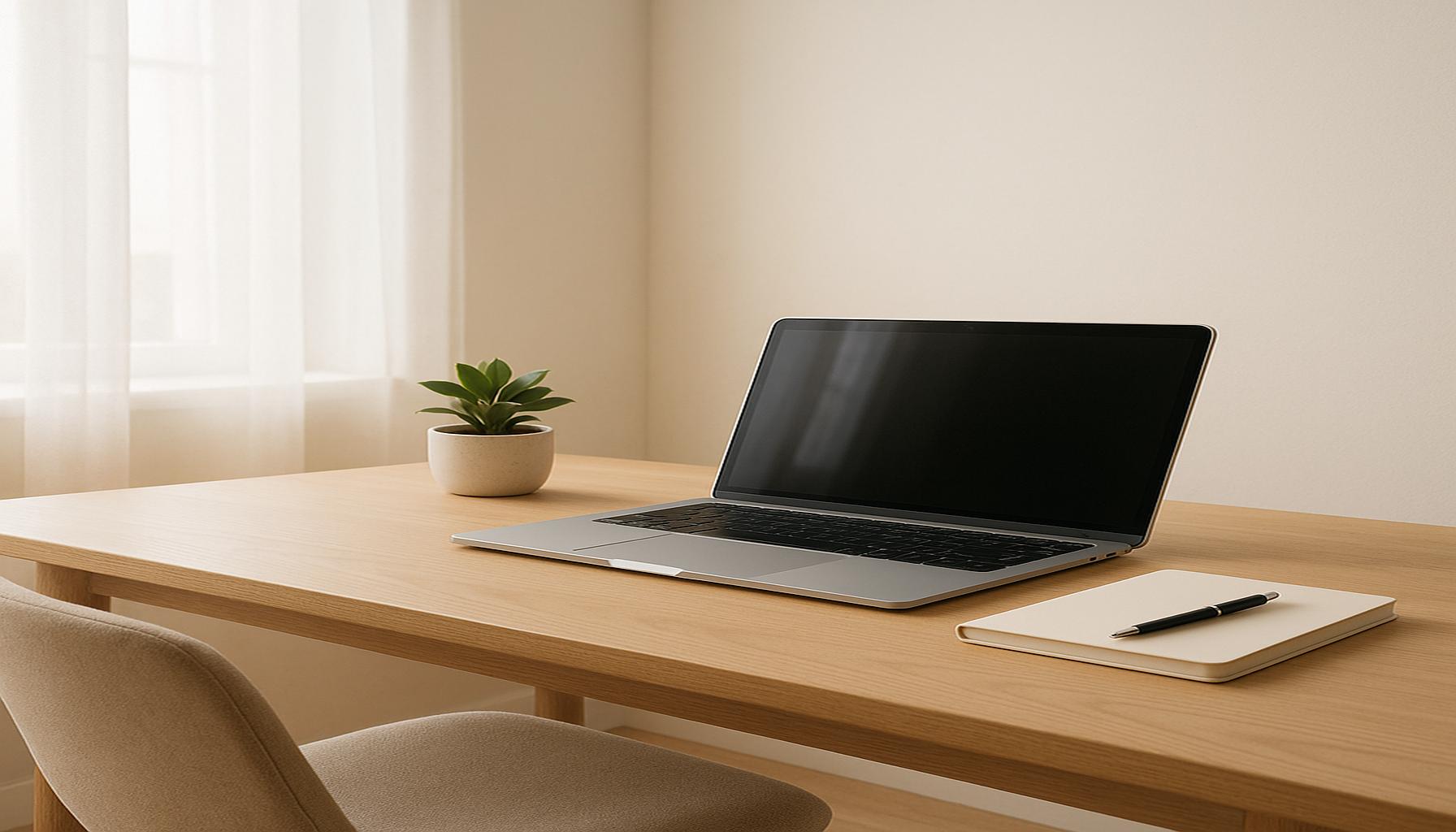Minimalism and Meditation: Integrating Simplicity Practices to Achieve a State of Deep Calm

The Art of Simplifying Life
In our relentless race against time, the noise of our busy lives can often overshadow the clarity we yearn for. As individuals seek refuge from the whirlwind of responsibilities and distractions, minimalism and meditation rise to prominence as essential practices for reestablishing balance and tranquility. These methodologies not only enable individuals to declutter their surroundings but also promote mental clarity, leading to profound personal growth.
Minimalism is more than just an aesthetic choice of living in less; it serves as a pathway toward a more meaningful existence. It prompts individuals to reflect on their values and prioritize what is truly important. Here are some key elements of minimalism that can effectively transform one’s lifestyle:
- Decluttering spaces and possessions: The act of physically removing unnecessary items from one’s home can have a surprisingly liberating effect. Studies suggest that a clean and organized environment can enhance productivity and creativity. For example, many people find that by keeping only the items that spark joy or hold significance, like a cherished book or family heirloom, they can foster a stronger emotional connection to their belongings.
- Reducing distractions and digital noise: In a world dominated by smartphones and constant notifications, adopting a minimalist approach to technology can be rejuvenating. Strategies such as limiting screen time, utilizing apps that promote focus, or even taking regular digital detoxes can significantly lower stress levels, allowing individuals to engage more deeply with their surroundings and relationships.
- Focusing on quality rather than quantity: Emphasizing quality in every aspect of life, whether in relationships or daily experiences, encourages individuals to savor each moment fully. This shift from a consumerist mindset to one of intentionality fosters deeper connections and more meaningful interactions.
In parallel, meditation acts as an invaluable complement to minimalism, helping individuals cultivate a profound inner peace. This practice encourages a heightened sense of awareness and understanding of one’s thoughts and emotions. Here are some unique benefits of incorporating meditation into your daily routine:
- Enhancing self-awareness and mindfulness: Regular meditation can cultivate a deeper understanding of oneself, paving the way for better emotional regulation. Mindfulness techniques, such as paying attention to the breath or observing thoughts without judgment, can result in enhanced focus and clarity.
- Reducing stress and anxiety: Scientific research indicates that meditation can lower levels of the stress hormone cortisol. By dedicating just a few minutes each day to meditation, individuals may find that their ability to manage stress improves significantly.
- Creating a state of tranquility amidst chaos: In turbulent times, a simple practice can ground you. Whether it’s a moment of quiet reflection or guided visualization, meditation helps foster a sense of calm, promoting resilience in the face of life’s challenges.
By merging minimalism with meditation, individuals embark on a transformative journey that impacts both their surroundings and mental health. The intersection of these two powerful practices encourages the removal of both physical and mental clutter, allowing once chaotic lives to bloom into a state of serenity. In the upcoming sections, we will delve deeper into practical strategies to intertwine these practices, helping readers navigate their own quest for simplicity and tranquility.
DISCOVER MORE: Click here to dive deeper

Connecting the Dots: Finding Harmony Through Minimalism and Meditation
The interaction of minimalism and meditation creates a powerful synergy that resonates with our contemporary quest for calmness and clarity. As society grapples with the complexities of modern living, both practices offer a pathway to a simpler existence while nurturing our mental well-being. The journey begins by understanding how minimalism’s focus on simplicity can enhance the depth of meditation, creating an environment where tranquility flourishes.
To practically incorporate minimalism into meditation routines, individuals can start by cultivating a designated meditation space that mirrors the principles of minimalism. Here are some effective strategies:
- Establish a clutter-free zone: Dedicate a specific area in your home as a meditation space, free of distractions and excess items. This not only promotes focus during meditation but also provides a serene environment that encourages regular practice.
- Incorporate natural elements: Utilize minimalistic decor that includes natural materials like wood, stone, or plants. Such elements foster a sense of connection to nature, enhancing the calming atmosphere that is conducive to meditation.
- Choose simple tools: Equip your meditation space with only essential tools—perhaps a comfortable cushion, a mat, or a calming candle. By limiting your resources, you eliminate unnecessary distractions, reinforcing the essence of minimalism.
In addition to establishing a physical space, integrating minimalism into your meditation practice can manifest in the form of time and intention management. Scheduling shorter, regular meditation sessions—as opposed to infrequent, lengthy practices—instills discipline and reinforces a minimalist ethos of quality over quantity. Each moment spent in stillness becomes significant, truly allowing for greater awareness and reflection.
Moreover, mindfulness meditation, a popular approach within meditation practices, aligns seamlessly with minimalism. By focusing solely on the present moment and cultivating awareness of thoughts, sensations, and feelings without judgment, practitioners can experience a profound sense of liberation. This process of letting go aligns with the minimalistic idea of decluttering mental space, making room for what genuinely matters.
As individuals delve deeper into the combined realms of minimalism and meditation, they may find that the benefits extend far beyond personal tranquility. The simplification of life through minimalism not only enhances the quality of meditation but also leads to improved overall mental clarity, emotional health, and a heightened ability to deal with stressors in everyday life. Each practice reinforces the other, creating a holistic approach to living that prioritizes simplicity and mindfulness.
With both practices highlighting the importance of intentionality, individuals can begin to experience a transformative journey nestled in the domain of deep calm. This exploration of simplicity through minimalism and meditation promises a fulfilling way to navigate the chaotic nature of modern existence. As we dig deeper into practical applications of these practices in upcoming segments, the potential for achieving a harmonious state of mind will become even clearer.
| Advantage | Description |
|---|---|
| Enhanced Focus | Embracing minimalism helps declutter your mind and environment, leading to improved concentration during meditation and daily tasks. |
| Stress Reduction | Practicing simplicity can significantly lower anxiety levels, creating a peaceful atmosphere that fosters a state of calm through meditation. |
Embracing minimalism is not just a lifestyle choice; it’s a transformative practice that influences mental clarity, emotional resilience, and well-being. By cultivating a space that reflects simplicity, individuals often report a heightened ability to remain focused. This focus is crucial not only for effective meditative practices but also for enhancing productivity in daily life.The interplay between **minimalism** and **meditation** allows for an enriching experience, as a simplified environment leads to diminished distractions and promotes deeper states of engagement. Many find that integrating these practices enables them to enter a profound state of calm, which is essential for mental rejuvenation and emotional balance.Moreover, the conscious act of simplifying one’s surroundings can serve as a meditative practice in itself. It encourages individuals to engage with their thoughts intentionally, aiding in the process of letting go of clutter—both material and mental. Such practices can ultimately lead to a more fulfilling and tranquil life experience, inviting readers to delve deeper into this harmonious relationship between minimalism and meditation.
DISCOVER MORE: Click here for tips on boosting clarity and focus
Embracing Minimalism: The Mindfulness Connection
As the integration of minimalism and meditation deepens, it’s essential to explore how living with less can cultivate a richer mental and emotional landscape. By adopting a minimalist mindset, individuals are encouraged to focus on what truly adds value to their lives, thereby promoting a form of mindfulness that aligns perfectly with meditation practices. This cultivation of presence and focus helps individuals carve out meaningful experiences, instead of drowning in the chaos of excess.
One significant principle of minimalism is the concept of “less is more.” This philosophy can be seamlessly woven into everyday life and meditation practices. For instance, consider simplifying your daily routines. By minimizing tasks and obligations, you create more mental space, allowing for deeper focus during meditation. This can be as simple as committing to fewer social obligations or decluttering your calendar to prioritize activities that enhance your well-being.
When individuals engage in minimalism, they often discover surprising physical and mental benefits. Research shows that clutter can significantly contribute to stress and anxiety levels. According to a study conducted by UCLA’s Center on Everyday Lives and Families, women who live in cluttered homes expressed higher levels of anxiety and lower overall life satisfaction. By embracing minimalism, not only can one relieve these stressors, but they also create an environment that naturally invites mindfulness, enhancing meditation practices.
Another technique that reflects both minimalism and meditation is the practice of detailed observation. This technique encourages individuals to pay intense attention to the smallest details in their surroundings during meditation. For example, focusing on the texture of a cushion, the sound of breathing, or the movement of light can enrich the meditation experience. Such detailed observation fosters a newfound appreciation for simplicities that may have gone unnoticed, reinforcing the minimalist approach of recognizing beauty in the mundane.
Additionally, one can apply the principle of minimalism to technology and digital consumption. In our increasingly digital world, distractions are abundant. Excessive notifications and information overload can hinder both mindfulness and meditation. By minimizing digital interfaces through practices like digital detoxes, individuals can protect their mental space. Setting specific times for checking emails or turning off notifications reinforces a state of calm—an essential aspect of effective meditation.
Joining communities centered around minimalism and meditation can also enhance personal growth and motivation. Numerous groups and online forums—such as The Minimalists or various meditation apps—provide resources and support that foster interaction, education, and inspiration. These platforms can serve as a catalyst for those who seek a deeper understanding of how simplicity can fuel their meditation practice, offering tips and stories from fellow practitioners that highlight the profound effects of these practices.
As these two powerful practices converge, individuals may find themselves empowered to craft a life that resonates with tranquility. Living intentionally, both in physical space and mental processes, nurtures a profound connection to oneself and the surrounding world. Indeed, the interplay of minimalism and meditation invites not only a reprieve from chaos but also a transformative journey toward a more fulfilling existence.
DISCOVER MORE: Click here to uncover the benefits of minimalism
Finding Serenity through Simplicity
In a world that often feels overwhelmingly complex, the merging of minimalism and meditation offers a reprieve—a guiding light toward achieving a state of deep calm. By embracing minimalism, we free ourselves from the clutter that distracts and overwhelms, making room for a more focused and intentional approach to life. As we declutter our environments and simplify our schedules, we also declutter our minds, paving the way for meaningful meditation practices that foster inner peace.
The benefits of integrating these two powerful practices are profound. By prioritizing simplicity, we cultivate mindfulness that enhances our meditation experiences. Whether through detailed observation or digital detoxes, each step taken towards minimalism invites us to witness the beauty in simplicity, transforming our daily interactions and perceptions of the world. This not only enhances our spiritual well-being but also contributes to our emotional resilience in an age dominated by excess.
Ultimately, minimalism and meditation stand as complementary practices that encourage us to live intentionally. They foster a deeper understanding of ourselves and our needs while empowering us to reconnect with what brings genuine value and happiness into our lives. As we navigate this journey toward tranquility, we may find that achieving a state of deep calm is less about striving for it and more about creating the space and mindset to welcome it. For those seeking a more harmonious existence, exploring the integration of simplicity and mindfulness could be the key to unlocking a fulfilling, serene way of life.


